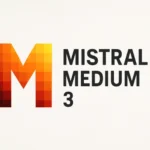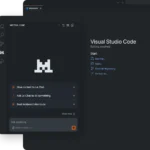Choosing the right large language model in 2025 can feel like navigating a maze of specs, benchmarks, and bold marketing claims. This in-depth guide breaks down mistral ai vs llama ai 2025 from every practical angle—model lineups, real-world performance, licensing, developer experience, enterprise compliance, and future roadmaps—so you can decide which ecosystem truly aligns with your goals.

Why This Showdown Matters in 2025
The AI arena has shifted from “bigger is better” bragging rights to nuanced battles over efficiency, transparency, and regional trust. Mistral AI, the fast-moving European innovator, and Meta’s LLaMA project, the heavyweight champion of open-weight models, embody these contrasting philosophies. Understanding their differences today sets the foundation for informed long-term investments.
Model Lineups at a Glance
Mistral’s 2025 Flagships
-
Magistral Medium (June 2025) – enterprise reasoning model, 128k context, traceable chain-of-thought.
-
Magistral Small (24B, Apache 2.0) – open-source sibling with 70.7 % AIME2024 score.
-
Mistral Medium 3 (May 2025) – cost-efficient, multimodal, SOTA-level coding.
-
Devstral Small (24B, Apache 2.0) – agentic coder, 46.8 % SWE-Bench Verified.
-
Mistral Small 3.1 (24B, Apache 2.0) – lightweight multimodal generalist.
Meta’s LLaMA 4 Herd
-
LLaMA 4 Scout 17B/109B (Apr 2025) – MoE, up to 10 M-token context, native multimodality.
-
LLaMA 4 Maverick 17B/400B (Apr 2025) – chat-tuned multimodal model, 1 M context.
-
LLaMA 4 Behemoth (Preview) – teacher model still in training for future distillations.
Performance & Benchmark Insights
Reasoning and Math
-
Magistral Medium scores 73.6 % on AIME2024 (90 % with majority voting), making it a top pick for domain-specific, auditable reasoning.
-
LLaMA 4 Scout delivers 79.6 on MMLU and 50.3 on MATH, leveraging extreme context to tackle sprawling documents.
Coding Workloads
-
Devstral Small outperforms models 10–20× its size on SWE-Bench Verified.
-
LLaMA 4 Maverick posts 43.4 on LiveCodeBench but underperforms in Rootly Labs’ SRE test, lagging behind specialized coders and some earlier LLaMA versions.
-
Mistral Medium 3 reaches 0.921 HumanEval (0-shot), edging past LLaMA 4 Maverick on several coding metrics.
Multimodal and Long-Context Tasks
-
Scout’s 3.5 M-token Bedrock limit (10 M in lab) enables cross-document synthesis unmatched by any Mistral release.
-
Pixtral Large (Nov 2024) and Mistral Small 3.1 hold their own on everyday image-understanding tasks, though recent research shows Gemini and Qwen lead on visually presented mathematics.
Plain-text comparison table:
| Model (2025) | Parameters (Active/Total) | Context Window | Benchmark Highlight | Strength Focus |
|---|---|---|---|---|
| Magistral Medium | Proprietary | 128 k (best ≤40 k) | 73.6 % AIME2024 | Transparent reasoning |
| Magistral Small 24B | 24B dense | 128 k | 70.7 % AIME2024 | Open reasoning |
| Mistral Medium 3 | Proprietary | — | 0.921 HumanEval | Balanced enterprise |
| Devstral Small 24B | 24B dense | 128 k | 46.8 % SWE-Bench Verified | Agentic coding |
| LLaMA 4 Scout 17B/109B | 17B / 109B MoE | up to 10 M | 79.6 MMLU, long-context | Multimodal, context |
| LLaMA 4 Maverick 17B/400B | 17B / 400B MoE | 1 M | 43.4 LiveCodeBench | Multimodal chat |
Licensing & Openness
Mistral’s Apache Edge
-
Magistral Small, Devstral Small, and Mistral Small 3.1 ship under Apache 2.0—free for commercial use, redistribution, and modification.
-
Enterprise-grade models (e.g., Magistral Medium) remain proprietary but accessible via API or on-prem licences.
LLaMA’s Community Licence Caveats
-
LLaMA 4 weights are downloadable, yet the licence restricts entities with >700 M monthly active users, placing big-tech rivals on notice.
-
Multimodal rights for EU-based users require extra scrutiny due to a special clause.
Developer Experience & Ecosystem
API & Cloud Access
-
Mistral La Plateforme offers free-tier tokens and hosts Magistral Medium, Mistral Medium 3, and Devstral Small.
-
LLaMA 4 is available on AWS Bedrock, Azure Foundry/Databricks, SageMaker JumpStart, and Vertex AI—ideal for teams already entrenched in these clouds.
Local Deployment & Hardware
-
Devstral Small / Magistral Small run on a single RTX 4090 or 32 GB Mac.
-
LLaMA 4 Scout squeezes onto one H100 GPU—but its famed 1.4 M+ context needs eight H100s.
-
Maverick generally demands multi-GPU clusters; local use is experimental.
Tooling & Fine-Tuning
-
LangChain wrappers exist for both ecosystems; Mistral publishes official fine-tune recipes for Codestral and more.
-
Ollama supports both model families, with v0.8 enabling tool-calling for local LLaMA 4 and streamlined quantization for Mistral models.
Enterprise Considerations
Compliance, Sovereignty & Trust
-
Mistral AI operates under EU law, unaffected by the U.S. CLOUD Act, and markets on-prem deployments plus Mistral Compute for sovereign GPU access.
-
Meta faces EU scrutiny over using public posts for model training; the LLaMA 4 licence’s EU multimodal clause requires legal review for regulated sectors.
Cost, Latency & Throughput
-
OpenRouter lists Magistral Medium at ~0.52 s latency, 59 tps; Mistral’s “Flash Answers” claims 10× faster output indoors.
-
OCI benchmarks log LLaMA 4 Maverick near 160 tps but with higher per-request latency when context is large.
-
Mistral’s efficient 24B models cut infrastructure bills for dev teams without access to H100 clusters.
Strategic Roadmaps & Future Outlook
Mistral’s Full-Stack Ambition
-
Mistral Compute (June 2025) bundles GPUs, orchestration, and PaaS with European data centers; launch partners include BNP Paribas and Thales.
-
Teasers hint at a larger flagship model and a beefier agentic coder beyond Devstral Small.
Meta’s Path to AGI
-
Previewed Behemoth will serve as a “teacher” model for future distillations.
-
Meta’s consumer apps provide near-1 B monthly interactions for real-world RLHF, accelerating LLaMA’s evolution.
-
Focus areas: extreme context scaling, early-fusion multimodality, and robust safety pipelines.
Conclusion:
In the mistral ai vs llama ai debate, the “better” model depends on your context:
-
Choose Mistral if you need Apache-licensed weights, fast local deployment on consumer GPUs, transparent reasoning, or GDPR-centric enterprise rollouts.
-
Choose LLaMA 4 if your workloads demand native multimodality with million-token contexts and you already leverage major cloud AI services.
Both ecosystems will continue to leapfrog each other, so bookmark this guide and revisit as new releases land. Got questions or real-world experiences? Share your thoughts below—your insight helps everyone pick smarter.
FREQUENTLY ASKED QUESTIONS (FAQ)
QUESTION: Which performs better for complex mathematical reasoning—Magistral Medium or LLaMA 4 Scout?
ANSWER: Magistral Medium edges ahead on AIME2024 (73.6 % vs Scout’s 50.3 % on MATH) and offers transparent chain-of-thought traces, making it preferable when auditability is critical. Scout’s advantage is its ability to process far longer contexts, which can matter for sprawling document sets.
QUESTION: Can I fine-tune Devstral Small for my company’s codebase without extra licences?
ANSWER: Yes. Devstral Small is released under Apache 2.0, so you can fine-tune, deploy, and even redistribute derivative models commercially without additional permissions, provided you respect the licence terms (e.g., retain notices).
QUESTION: Is LLaMA 4 Maverick suitable for local deployment on a single GPU?
ANSWER: Realistically, no. Although Maverick activates only 17 B parameters per token, its 400 B-parameter MoE structure still requires multi-GPU inference for production-level throughput. Developers typically use cloud endpoints or distributed setups.
QUESTION: How does Mistral Compute differ from using AWS Bedrock for LLM hosting?
ANSWER: Mistral Compute offers sovereign European data centers, bundled orchestration, and direct access to Mistral’s proprietary models under EU jurisdiction—ideal for organizations prioritizing GDPR and data locality. AWS Bedrock delivers global scalability but stores data in AWS-managed regions and applies Amazon’s compliance stack.
QUESTION: Are the 700 M MAU restrictions in the LLaMA 4 Community License likely to change?
ANSWER: Meta hasn’t announced plans to adjust the threshold. Large platforms exceeding 700 M MAU must still negotiate separate terms, so enterprises approaching that scale should monitor licence updates or engage Meta directly.






